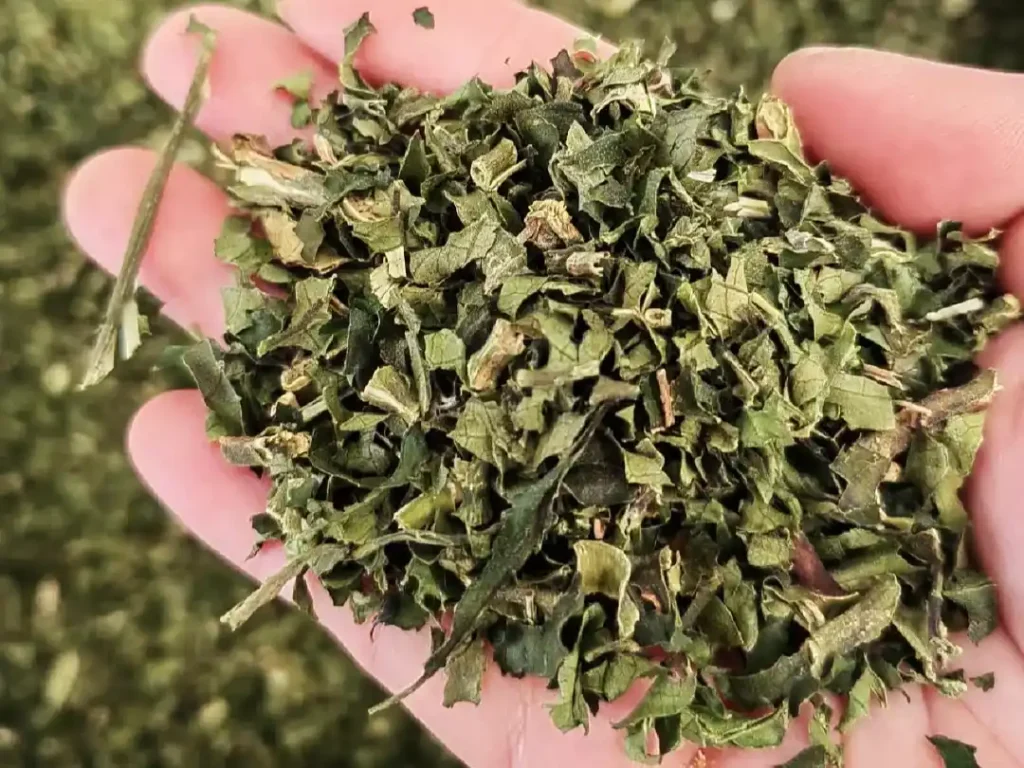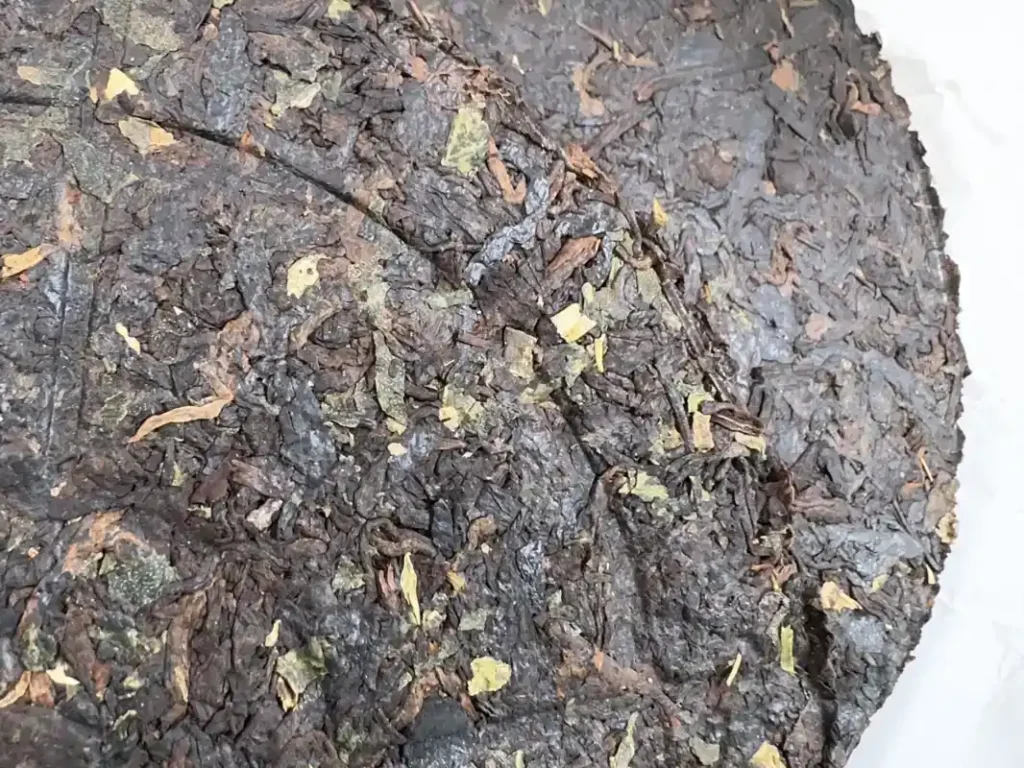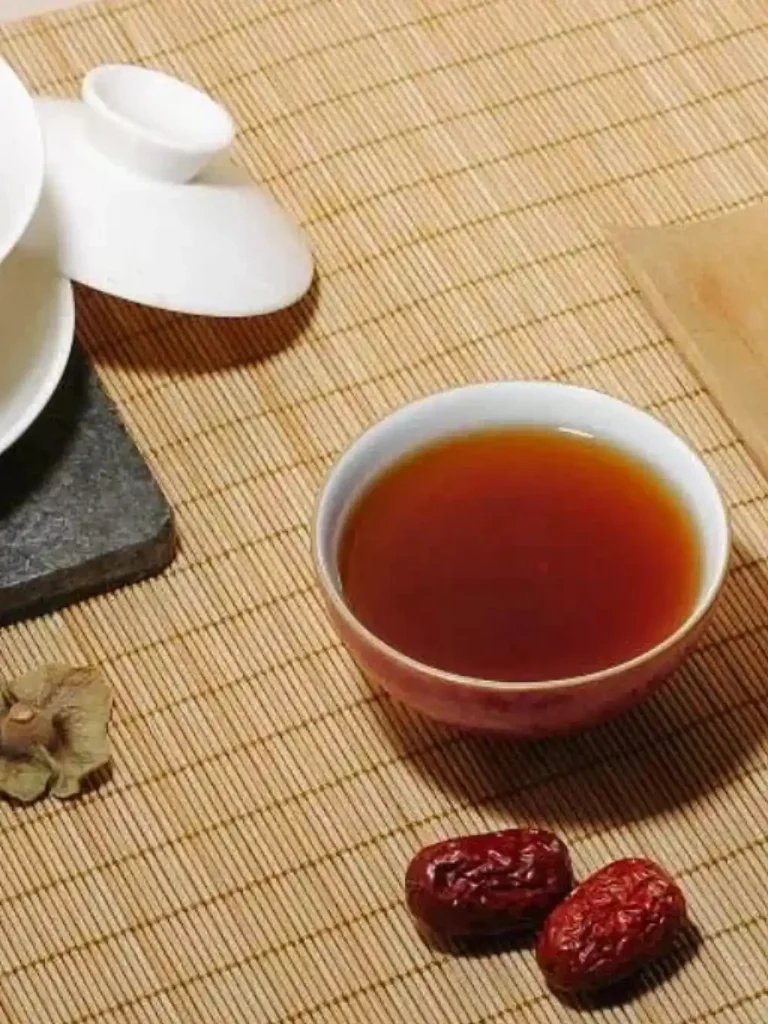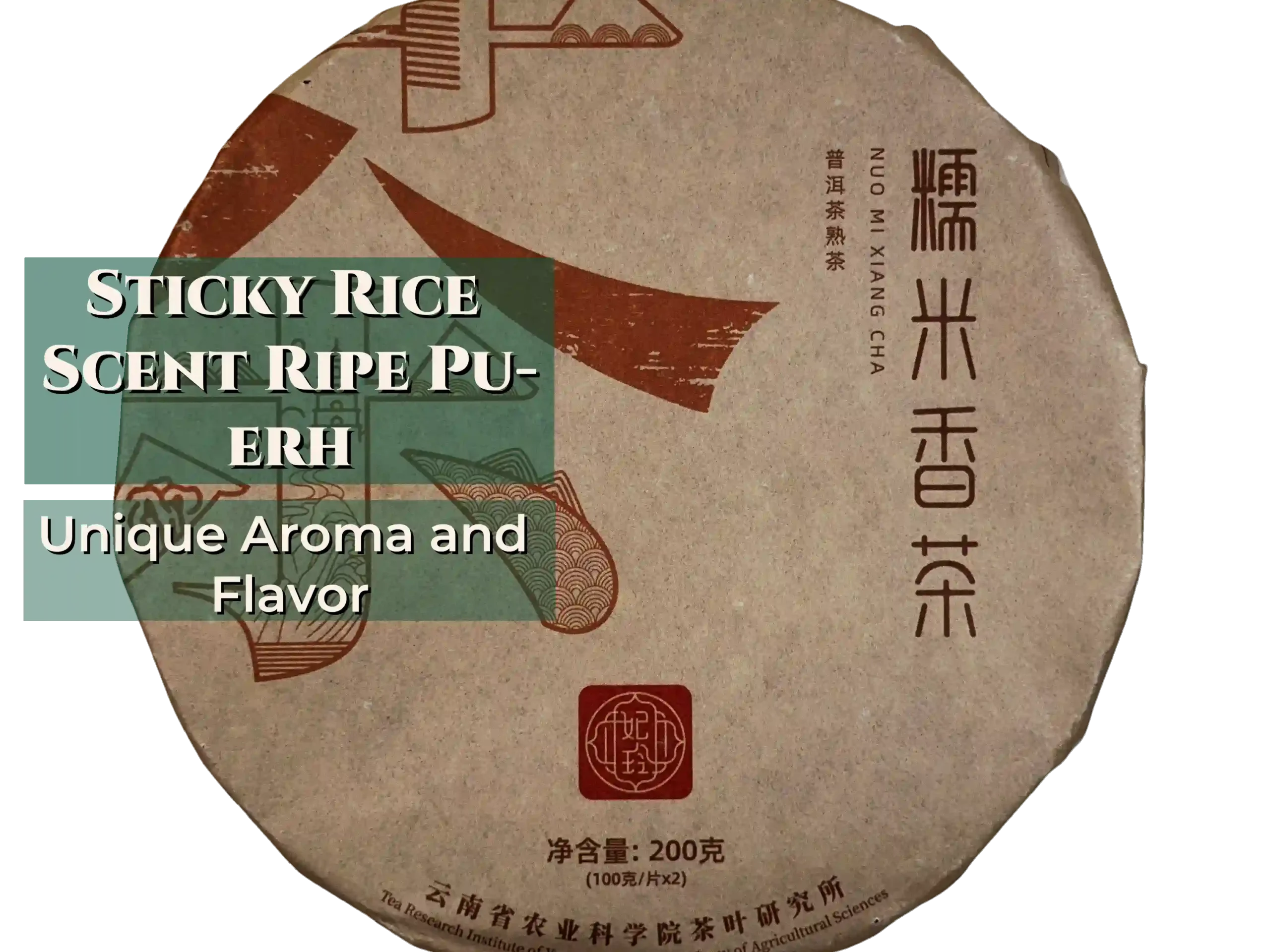Tea enthusiasts worldwide constantly seek new and exciting flavors to tantalize their taste buds. Among the myriad of tea varieties available, one stands out for its distinctive aroma and flavor profile: Sticky Rice Scent Ripe Pu-erh Tea, also known as “Nuo Mi Xiang” in Chinese. This unique tea has captivated many tea lovers’ hearts, offering a delightful fusion of earthy Pu-erh notes and the comforting aroma of sticky rice. In this article, we’ll delve into the world of Sticky Rice Scent Pu-erh Tea, exploring its origins, production process, and the qualities that make it a truly exceptional brew.
The Origins and History of Sticky Rice Scent Pu-erh Tea
Sticky Rice Scent Pu-erh Tea, or Nuo Mi Xiang, has its roots in the Yunnan province of China, the birthplace of Pu-erh tea. The concept of infusing Pu-erh with the aroma of sticky rice is believed to have originated from the Dai ethnic minority in Yunnan. Traditionally, the Dai people would store their Pu-erh tea leaves with sticky rice to preserve them, inadvertently creating a unique flavor profile that would later become highly sought after.

Over time, tea artisans in Yunnan refined this accidental discovery into an art form. They began deliberately scenting Pu-erh tea with a unique herb called “Nuo Mi Xiang Nen Ye” (Sticky Rice Herb), which naturally emits an aroma similar to cooked sticky rice. This innovative approach allowed them to create a consistent and authentic sticky rice scent without using rice in production.
The popularity of Sticky Rice Scent Pu-erh Tea has grown steadily over the years, extending beyond China’s borders to captivate tea enthusiasts worldwide. Its unique flavor profile offers a novel experience for those accustomed to traditional Pu-erh tea while also serving as an approachable entry point for newcomers to fermented teas.
The Intricate Production Process of Nuo Mi Xiang

Creating Sticky Rice Scent Tea is a meticulous process that requires skill, patience, and attention to detail. It begins with selecting high-quality ripe Pu-erh tea leaves, which have already undergone the traditional fermentation process that gives Pu-erh its distinctive earthy flavor.
The key to achieving the characteristic sticky rice aroma is using the Nuo Mi Xiang Nen Ye herb. This herb, scientifically known as Semnostachya menglaensis, is native to the Xishuangbanna region of Yunnan. It’s carefully harvested and dried before being incorporated into the tea production process.
The scenting process typically involves the following steps:
- The dried Nuo Mi Xiang Nen Ye herb is mixed with the ripe Pu-erh tea leaves in specific proportions.
- The mixture is then steamed, allowing the herb’s aroma to permeate the tea leaves.
- After steaming, the tea is dried to remove excess moisture.
- The scented tea leaves are then pressed into various shapes, such as cakes, bricks, or loose-leaf forms.
- The tea is aged for a period, allowing the flavors to meld and develop further.
This careful process results in a tea that beautifully balances the deep, earthy notes of ripe Pu-erh with sticky rice’s aromatic, comforting scent. The proportion of herb to tea leaves and the duration of the scenting process can vary, allowing for different intensities of the sticky rice aroma in the final product.
The Unique Sensory Experience of Sticky Rice Scent Pu-erh Tea

Its exceptional sensory profile sets Sticky Rice Scent Pu-erh Tea apart. From the moment you open a package of this tea, you’re greeted with an enticing aroma that combines the familiar earthiness of Pu-erh with the warm, comforting scent of freshly cooked sticky rice.
1. Visual Appeal: In its dry form, Sticky Rice Scent Pu-erh Tea often appears similar to regular ripe Pu-erh, with dark brown to black leaves. However, you might notice tiny, pale green flecks interspersed among the tea leaves – these are pieces of the Nuo Mi Xiang Nen Ye herb.
2. Aroma: The fragrance of this tea is truly captivating. Before brewing, the dry leaves emit a strong, sweet aroma reminiscent of glutinous rice. This scent intensifies when hot water is added, filling the room with a comforting, homey fragrance that evokes memories of warm kitchens and satisfying meals.
3. Flavor Profile: The taste of Sticky Rice Scent Pu-erh Tea reveals its complexity upon sipping. The initial notes are often sweet and grainy, as the scent suggests. This is followed by the characteristic deep, earthy flavors of ripe Pu-erh tea. The sticky rice flavor doesn’t overpower the tea but complements it, creating a harmonious, familiar, and exotic blend.
4. Mouthfeel: Like traditional ripe Pu-erh, Sticky Rice Scent Pu-erh Tea has a smooth, full-bodied texture. Adding the sticky rice scent enhances this quality, creating a round, satisfying mouthfeel that lingers pleasantly.
5. Aftertaste: The finish of this tea is often described as sweet and clean, with the sticky rice notes gently fading to leave a subtle, earthy sweetness characteristic of quality Pu-erh.
The unique sensory experience of Nuo Mi Xiang has made it a favorite among tea enthusiasts looking for something different. It offers the depth and complexity of traditional Pu-erh tea, enhanced by an aroma that’s both novel and comfortingly familiar. This combination has the power to intrigue experienced tea drinkers while also providing an accessible entry point for those new to the world of Pu-erh teas.
Health Benefits and Cultural Significance
Beyond its delightful taste and aroma, Sticky Rice Scent Pu-erh Tea is also associated with various health benefits. Like other Pu-erh teas, it’s rich in antioxidants and is believed to aid digestion, support weight management, and promote overall well-being. Adding the Nuo Mi Xiang Nen Ye herb may contribute additional health properties, although more research is needed to fully understand its effects.
In Chinese culture, this tea holds a special place. The combination of Pu-erh tea, long revered for its health benefits and cultural significance, with the comforting aroma of sticky rice, a staple in many Asian cuisines, creates a familiar and exotic brew. It’s often enjoyed after meals, particularly heavy or oily foods, as it aids digestion and cleanses the palate.
The popularity of the Sticky Rice Scent Pu-erh Tea also reflects the innovative spirit of Chinese tea culture. By creatively combining traditional Pu-erh with the aromatic Nuo Mi Xiang Nen Ye herb, tea artisans have created a new classic that honors tradition while offering something fresh and exciting.
Conclusion
Sticky Rice Scent Pu-erh Tea, or Nuo Mi Xiang, is a testament to Chinese tea culture’s creativity and innovation. Marrying the deep, complex flavors of ripe Pu-erh with the comforting aroma of sticky rice offers a unique sensory experience that has captivated tea lovers worldwide. As you explore the world of Sticky Rice Scent Pu-erh Tea, remember that each cup tells a story – ancient tea forests in Yunnan, skilled artisans perfecting their craft, and endless possibilities that arise when tradition meets innovation.
We serve thousands of satisfied tea enthusiasts in our tea house each year, and we’re excited to share these exceptional teas with tea lovers worldwide at Orientaleaf.com.

References
- Zhang, L., et al. (2013). “Pu-erh Tea: Botany, Production, and Chemistry.” In V. R. Preedy (Ed.), “Tea in Health and Disease Prevention” (pp. 59-70). Academic Press.
- Wang, Q., et al. (2016). “Pu-erh Tea and Its Benefits: A Review.” Journal of Agricultural and Food Chemistry, 64(41), 7679-7689.
- Huang, Y., et al. (2019). “Semnostachya menglaensis: A New Species of Lamiaceae from Yunnan, China.” PhytoKeys, 130, 193-204.
- Liu, T., et al. (2011). “Bioactive Compounds from the Leaves of Semnostachya menglaensis.” Journal of Natural Products, 74(4), 782-786.
- Xie, G., et al. (2020). “Nuo Mi Xiang: The Aromatic Rice-Scented Herb Used in Yunnan Pu-erh Tea.” Journal of Ethnopharmacology, 259, 112966.


